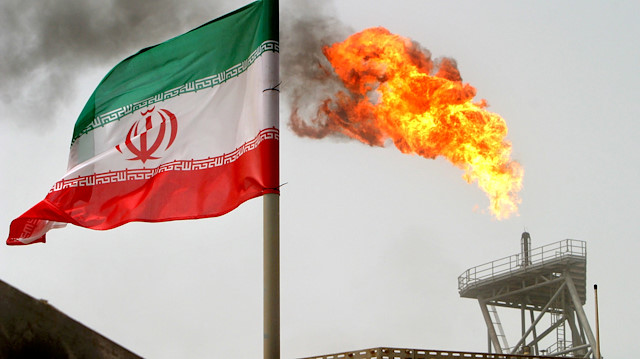
Any halting of Iranian oil purchases by Japan and South Korea in compliance of U.S. sanctions are being more than offset by increasing purchases by China and India
On Nov. 6, U.S. sanctions against Iran’s oil exports went into force. Analysts and experts alike have been competing with each other in their projections about how much Iran will lose from its oil exports as a result of the sanctions. Their projections have ranged from 500,000 barrels a day (b/d) to 2.00 million barrels a day (mbd) out of estimated average Iranian oil exports of 2.2 mbd.
Most of these projections were, in my opinion, based on faulty assumptions and lack of understanding of the dynamics of the global oil market and virtually bordering on daydreaming and wishful thinking.
Despite reports by the likes of Reuters and Bloomberg, Iran’s oil exports have not fallen at all. Any halting of Iranian oil purchases by Japan and South Korea in compliance of U.S. sanctions are being more than offset by increasing purchases by China and India.
However, I have been saying for quite a while that U.S. sanctions on Iran are doomed to fail miserably and that Iran will not lose a single barrel from its oil exports. My reasoning is based on the following five market realities.
The first is that the overwhelming majority of nations of the world including U.S. allies and major buyers of Iranian crude are against the principle of sanctions on Iran as unfair and will not therefore comply with them and will continue to buy Iranian crude.
Iran has not violated any of the terms of the nuclear deal.
The second reality is the petro-yuan which has virtually nullified the efficacy of U.S. sanctions and provided an alternative way to bypass the sanctions and petrodollar altogether.
A third reality is that China, which is being subjected to intrusive U.S. tariffs, and Russia, which has been battling U.S. sanctions since 2014, will ensure the failure of U.S. sanctions against Iran as a sort of retaliation against the U.S.
A fourth reality is that China can singlehandedly neutralize U.S. sanctions by deciding to buy all Iranian oil exports amounting to 2.2 mbd as a retaliation against the escalating U.S. trade war and paying for them in petro-yuan.
A fifth reality is that 95 percent of Iran’s oil exports go to countries who declared that they will not comply with U.S. sanctions, namely China (35 percent), India (33 percent), the European Union (20 percent) and Turkey (7 percent).
The European Union (EU) has signaled that it will not comply with U.S. sanctions on Iran and that it is already setting up a mechanism to evade U.S. sanctions and continue trade with Iran. Furthermore, it has resurrected an existing legislation to defend European companies dealing with Iran against U.S. sanctions.
The EU has a lot of economic muscle, being the largest trade bloc in the world accounting for 25 percent of the global economy compared with 18 percent of the U.S. If the U.S. takes action against the EU for dealing with Iran, the EU will retaliate.
The EU has no alternative but to support continued trade with Iran, because if Iran is not satisfied with EU support, it will definitely abandon the nuclear deal altogether. In such a situation, the alternative could be a further escalation of tension between the U.S. and Iran, possibly leading to a war engulfing the entire Gulf region.
India has lately come under intense U.S. pressure to reduce its Iranian crude oil purchases to zero. India is the world’s third-largest economy after China and the United States in terms on purchasing power parity (PPP). It is also the world’s third-largest crude oil importer. Moreover, it is Iran’s second biggest customer accounting for 33 percent of Iranian crude oil exports.
India will never kowtow to the United States or anybody else for that matter. It will look after its own national interests. Therefore, it will never halt its imports of Iranian crude, no matter the degree of the pressure from the U.S. India announced that it doesn’t recognize any sanctions but UN sanctions and that it will ignore U.S. sanctions on Iran and continue to import Iranian crude. India’s crude oil imports have been on the rise. This is not the action of a country planning to comply with U.S. sanctions on Iran.
Moreover, Iran is not sitting idle either. It is reported to have offered India cargo insurance and tankers operated by Iranian companies as some Indian insurers have backed out of covering oil cargoes from Iran in the face of the returning U.S. sanctions on Tehran. India could pay for its Iranian oil imports by the rupee, barter trade or even petro-yuan, thus bypassing U.S. sanctions altogether.
Then there is Turkey which accounts for 7 percent of Iranian crude exports and which has already declared that it doesn’t recognize the U.S. sanctions against Iran. All in all, 95 percent of Iranian oil exports will bypass U.S. sanctions.
The escalating trade war between the U.S. and China will hardly impact global trade and oil demand since the volume of global trade will not be affected, only the destinations.
If China was hindered by rising U.S. tariffs from selling $800-billion worth of goods annually in the U.S., it can sell them somewhere else as its economy is far more integrated than the U.S. economy in the global trade system supported by its Silk and Belt Road initiative. China’s oil imports, which drives global oil demand, will therefore continue unabated.
The U.S., on the other hand, may have to replace Chinese imports with more expensive imports from elsewhere. This could lead to rising costs for U.S. customers, higher inflation, widening budget deficit and rising outstanding debts by at least 2.35 percent. In other words, the U.S. will be the eventual loser in a full trade war with China.
The meeting in November between U.S. President Trump and Chinese President Xi Jingping provides a glimmer of hope that a breakthrough ending the escalating trade war between their countries could be achieved.
The first crack in the U.S. armor appeared when the U.S. Treasury concluded that China has not been manipulating its currency to benefit from trade with the United States. This is one of two accusations President Trump used when he imposed tariffs on Chinese exports. The other is the huge trade surplus China enjoys with the U.S.
It is, therefore, no coincidence that the Trump/Jingping meeting comes at the time U.S. sanctions against Iran go into force.
I have repeatedly argued that sooner or later President Trump will realize the futility of his escalating trade war against China. It is a war he can’t win. He will eventually be forced to cut his losses by bringing an end to his trade war with China.
With the robustness of the global oil market fundamentals, OPEC/Russia’s inability to add more than 650,000 b/d, which Saudi Arabia and Russia combined have already done and with persistent question marks about Saudi’s proven reserves and production and spare capacities, a $100 oil price is not an if but a when.
At one point, a hint from Saudi Arabia about oil production could have sent oil prices rocketing or declining. Alas this is no longer the case.
Saudi claims about the size of its proven oil reserves, spare capacity and its production capacity are currently under global scrutiny.
Doubts about Saudi reserves were one of two major reasons for the withdrawal of the Initial Public Offering (IPO) of Saudi Aramco from the market altogether. The other is the risk of the American litigation in relation to 9/11. King Salman of Saudi Arabia couldn’t have been clearer when he justified his decision to withdraw the IPO for not wanting to expose Saudi oil reserves and finances to scrutiny.
Saudi Arabia claims that it has a production capacity of 12.5 mbd. This can’t in any stretch of the imagination be true, because despite repeated calls by President Trump to Saudi Arabia to significantly increase its oil production, it managed to add only 400,000 b/d to the market and even these did not come from new production but from oil stored on board tankers or on land. Saudi oil production peaked at 9.6 mbd in 2005 and has been in decline ever since.
And with the failure of the talks between Saudi Arabia and Kuwait to agree to restart the oilfields in the Neutral Zone, which is shared equally between them, Saudi Arabia has lost the opportunity to add 250,000 b/d more to the market on top of the 400,000 b/d it already added two months ago.
Therefore, Saudi claim of having a 2 mbd-spare capacity is very doubtful and is yet to be tested by the market.
Having failed to force a decline in oil prices, President Trump started castigating the Arab Gulf oil producers by claiming that the United States has been protecting them and yet they have failed to help him reduce oil prices.
His claim is a brazen and crude attempt of blackmailing these countries. The only threat facing these countries is Israel, which is provided with money and the most sophisticated weaponry by the United States to maintain its threat and military ascendancy in the Middle East. America and Israel are one and the same and they pose the most serious threat to countries of the Middle East.
Another discredited claim is that the U.S. is protecting global oil supplies and global sea shipping lanes. The U.S. has its Central Command based in Qatar to ensure that it controls global oil supplies, because whoever controls these supplies, oil shipping lanes and chokepoints, controls the global economy.
An oil price higher than $100 a barrel is good for the global economy. It invigorates the three biggest chunks of the global economy, namely, global investments, the economies of the oil-producing nations and the global oil industry.
The world could be heading toward a global oil supply gap by 2021/22 resulting from a drought of investment since the 2014 oil price crash. The global oil market needs 15 mbd by then to meet global demand and also to offset a 5 percent annual depletion rate, almost equivalent to Iraq’s current oil production. However, judging by current trends, it will be virtually impossible to add 15 mbd between now and 2022. Therefore, the probability of oil prices reaching $120 a barrel should be taken seriously.
Hello, the comments you share on our site are a valuable resource for other users. Please respect other users and different opinions. Do not use rude, offensive, derogatory, or discriminatory language.
The floor is all yours.








